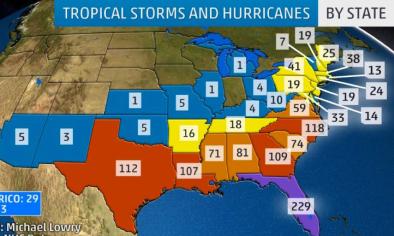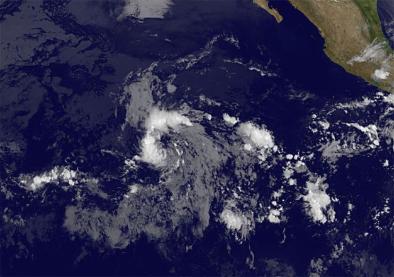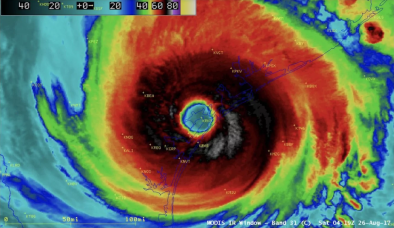Why did Hurricane Sandy take such an unusual track into New Jersey?

We're used to seeing hurricane-battered beaches and flooded cities in Florida, North Carolina, and the Gulf Coast. But to see these images from the Jersey Shore and New York City in the wake of Hurricane Sandy is a shocking experience. New Jersey only rarely gets hit by hurricanes because it lies in a portion of the coast that doesn't stick out much, and is too far north. How did this happen? How was a hurricane able to move from southeast to northwest at landfall, so far north, and so late in hurricane season? We expect hurricanes to move from east to west in the tropics, where the prevailing trade winds blow that direction. But the prevailing wind direction reverses at mid-latitudes, flowing predominately west-to-east, due to the spin of the Earth. Hurricanes that penetrate to about Florida's latitude usually get caught up in these westerly winds, and are whisked northeastwards, out to sea. However, the jet stream, that powerful band of upper-atmosphere west-to-east flowing air, has many dips and bulges. These troughs of low pressure and ridges of high pressure allow winds at mid-latitudes to flow more to the north or to the south. Every so often, a trough in the jet stream bends back on itself when encountering a ridge of high pressure stuck in place ahead of it. These "negatively tilted" troughs have winds that flow from southeast to northwest. It is this sort of negatively tilted trough that sucked in Sandy and allowed the hurricane to take such an unusual path into New Jersey.[1]
The 1903 Vagabond Hurricane
The only other hurricane to hit New Jersey since 1851 besides Sandy was the 1903 Category 1 Vagabond Hurricane. According to Wikipedia, the Vagabond Hurricane caused heavy damage along the New Jersey coast ($180 million in 2006 dollars.) The hurricane killed 57 people, and endangered the life of President Theodore Roosevelt, who was sailing on a yacht near Long Island, NY, when the hurricane hit. However, the Vagabond Hurricane hit in September, when the jet stream is typically weaker and farther to the north. It is quite extraordinary that Sandy was able to hit New Jersey in late October, when the jet stream is typically stronger and farther south, making recurvature to the northeast much more likely than in September.
Related Content





